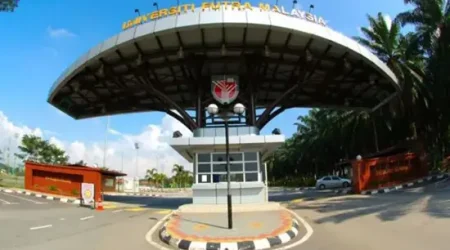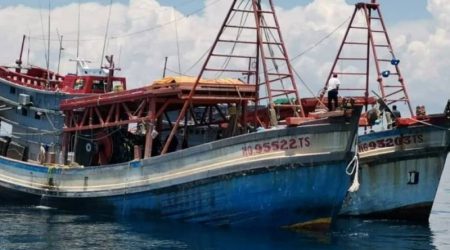Heatwaves, flash floods expected
JOHOR residents are urged to brace for extreme and unpredictable weather patterns such as heatwaves and flash floods as the state faces changing monsoon conditions and climate instability.
Johor climate change and state disaster management select committee chairman Anuar Abd Manap said Malaysians must remain alert and adaptable, especially as the country moves into a period marked by erratic weather.
“Although we’re entering the hot and dry season, we’ve seen how sudden downpours can still occur, like the unexpected floods earlier this week.
“There were also incidents of stagnant flooding in some areas,” he said.
Anuar said weather unpredictability was now a norm due to shifts in wind direction, cloud movements and monsoon transitions.
“Some areas might experience clear skies and extreme heat, while others suddenly see heavy rainfall.
“It’s no longer easy to forecast weather patterns the way we used to.”
Temperatures in certain parts of Johor, he said, might hit 35°C, which raised concerns over the population’s preparedness for extreme heat.
“What worries us most is that many are still unprepared for extreme conditions – whether it’s flash floods or high heat.”
Public awareness was key and Malaysians had to be prepared to cope with weather extremes, said Anuar.
At the state level, Johor climate change and state disaster management select committee would be convening a meeting early next month, ahead of the next state assembly sitting, he added.
“The main agenda will be last month’s severe floods in Johor and identifying effective solutions.
“We will also discuss the dry spell and high temperatures that could affect the state, based on what we experienced last year.”
Anuar said last year, several rivers in Johor dried up or experienced a drop in water levels, creating water security concerns.
“Unlike floods, which might affect an area for a few days or weeks, prolonged heat has far-reaching impacts – it affects schools, public health, crop yields, livestock and most importantly, our dams and water reserves,” he said.
Affected dams include the ones in Bekok, Sembrong and Juaseh, which saw significant water level reductions due to the prolonged hot spell.
“We don’t want water levels to reach critical points that could disrupt supply. But unfortunately, this is beyond our control.
“What we can do is ensure early preparations are in place to minimise risks,” Anuar said.
Green Earth Society Johor president
P. Sivakumar said the current heatwave affecting parts of Malaysia indicated worsening effects of climate change.
He said the intense heat was a result of greenhouse gas emissions, which trapped heat in the atmosphere for extended periods.
“We are seeing longer heatwaves, with more frequency and increasingly serious impact.
“Residents living near peat soil areas should exercise extra caution, as prolonged heat could trigger fire outbreaks if such areas are not kept cool.”
He said vulnerable groups, particularly children and the elderly, were at greater risk of heat-related illnesses and even fatal complications such as heatstroke if exposed to excessive temperatures.
“We urge Malaysians to plan their daily routines wisely during this period,” he said.
Sivakumar advised the public to avoid outdoor activities during the hottest parts of the day, and where possible, reschedule tasks to when conditions were cooler.
He also reminded the public to stay well-hydrated and bring water bottles when going out.
“People should avoid high-energy outdoor activities during midday.
“One of the main risks during a heatwave is dehydration, which can occur when people forget to drink enough fluids.”
He also urged Malaysians to monitor daily weather forecasts from the Meteorological Department, either through official websites or the MyCuaca mobile app.













Leave a Reply